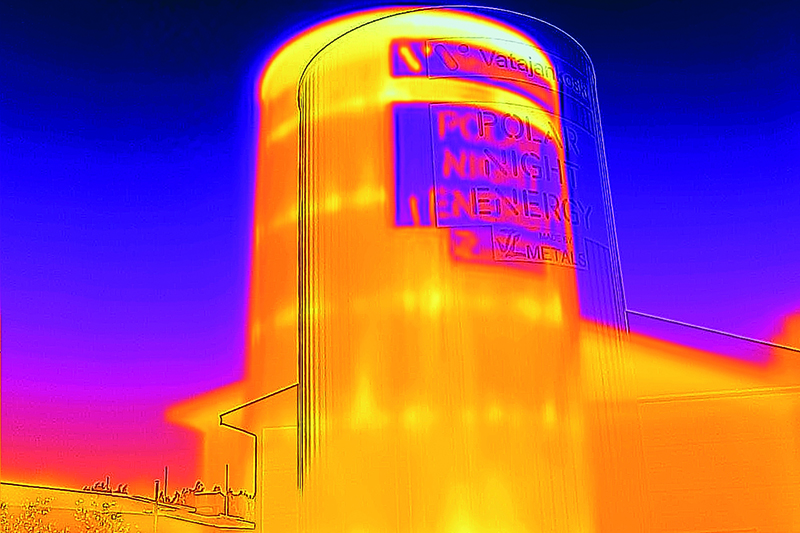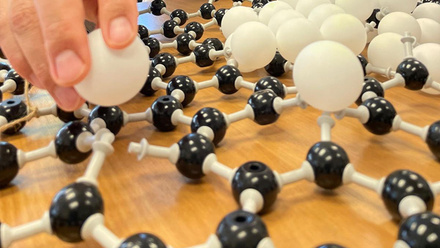Hot sand battery charges up
The first commercial, sand-based, high-temperature, heat storage system is now operating in Western Finland.

Designed and built by Polar Night Energy, Finland, the battery uses 100t of sand to store and supply low-emission district heating in a town called Kankaanpää. It has 100kW heating power and 8MWh of capacity, and heats residential and commercial buildings, including a municipal swimming pool.
Energy utility firm Vatajankoski uses the storage to prime waste heat from their data servers. The 60°C waste heat is raised to 75-100°C before being fed into the district heating network.
Beyond this application, the sand battery concept works as a high-power and high-capacity reservoir converting excess solar and wind energy to heat, where 70% is stored at 300-500°C and can be used to heat homes or provide process heat to industry.
As sand heat storage can store several times the amount of energy as a similar sized water tank, it is considered a more efficient method of heat transfer.
The sand in this instance is stored in a 7x4m insulated steel silo with heat transfer pipes and charged when clean and cheap electricity is available – with electrical energy transferred to heat storage using a closed loop air-pipe arrangement. Air is heated using electrical resistors and circulated in the heat transfer piping.
Heat is extracted by blowing cool air through the transfer pipes, with the air heating up as it passes through and converts water to process steam or district heating in an air-to-water heat exchanger. Chief Technology Officer of Polar Night Energy, Markku Ylönen, says, 'Our storage temperature is so high that we have no issues in providing heat for homes. We can provide 200°C steam for industries with the same principle, so temperature levels at residential systems are low in our perspective.
'We use the same closed air loop that we use for charging. There’s an air-water heat exchanger connected to the system. We can also generate steam, or hot air to processes, if the heat exchanger is of that type.
'We have resistive elements outside the sand that heat air to high temperature. This air passes to the storage and heats the sand. The energy comes from the electric grid, we charge it when clean and cheap electricity is available. We don’t keep it constantly hot – the sand goes through charge and discharge cycles constantly, similar to any energy storing device.'
Ylonen continues, '[At Kankaanpää,] we sized the storage according to the heating power needs to boost the waste heat from the data servers on the site…We also discussed with the metal workshop to find the cost-optimal size in regard to construction and on-road transportation of the storage.'
Polar Night Energy says that the maximum temperature is about 600°C, but in practice this is limited by the heat resistance of the materials, the construction and control of the storage. Although Ylönen says, 'Between the outer steel layer and the inner one we have an insulation all around the storage, so the conductive losses due to the steel structure is marginal.'
As the heat storage is not very sensitive to grain size, Polar Night Energy ideally uses high-density, low-cost sand that is unsuitable for the construction industry.
They say that the sand can stay hot for months in winter if needed, but the sand heat storage in Kankaanpää is charged in approximately two-week cycles. They have found that the best range is with 20-200 times a year of charging depending on application. Ylönen says, 'The more energy we put through the storage per year, the better the financial numbers look like. And, wind is more available in the winter than summer, so the low-cost and clean moments in electricity production are still there.'
The silo in Kankaanpää was built after a 3MWh pilot plant was connected to the district heating network of the City of Tampere in Finland and heated a couple of buildings.
Polar Night Energy has plans for a larger sand heat-storage system to be built from 2023. Ylönen says, 'We have ready plans for a storage with 10,000t of sand-like material. This is about 100 times larger in volume than the Vatajankoski storage. That size is aimed to be our standard-size for some years, as it is a good fit for many district heating networks and for industrial sites.'







